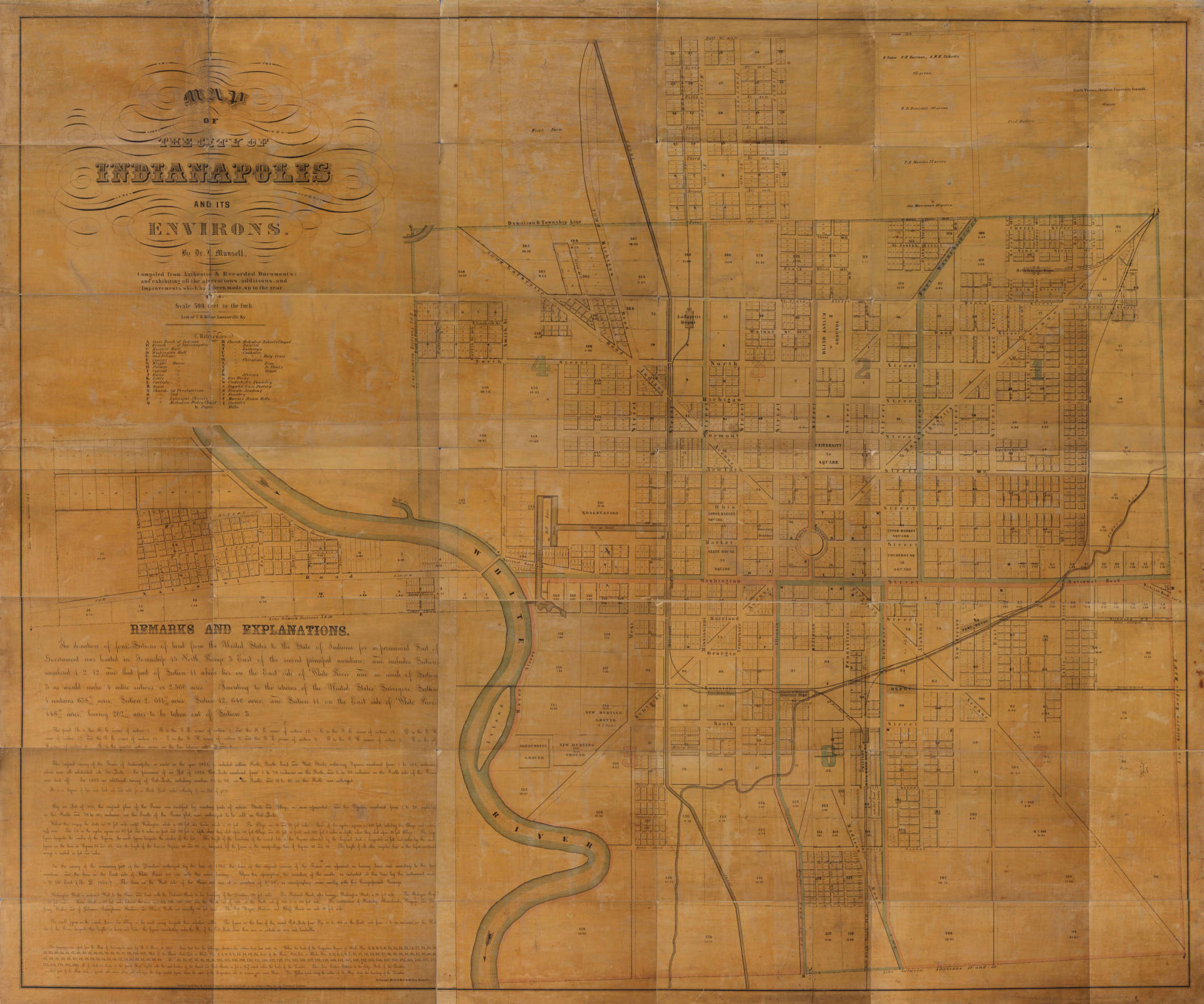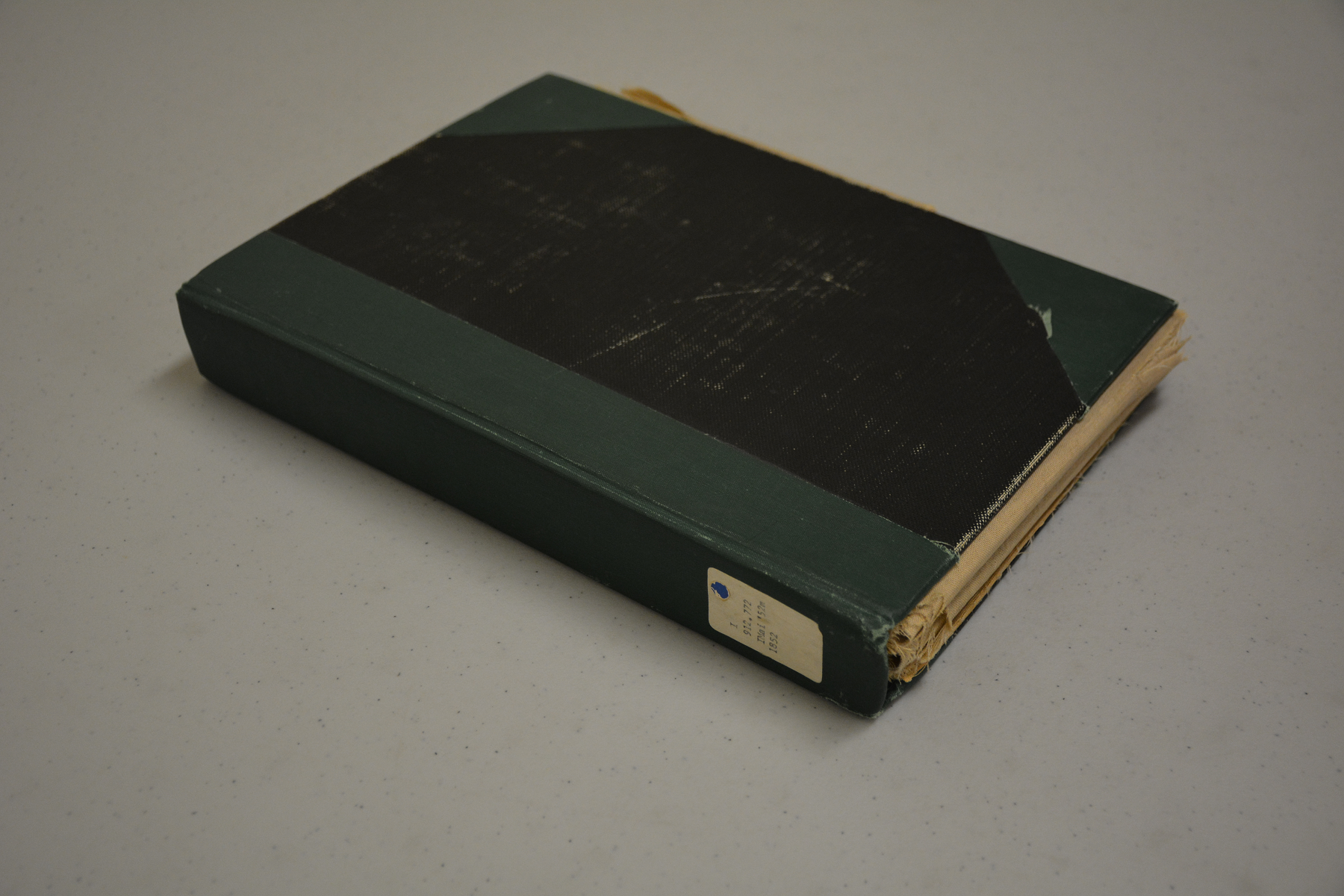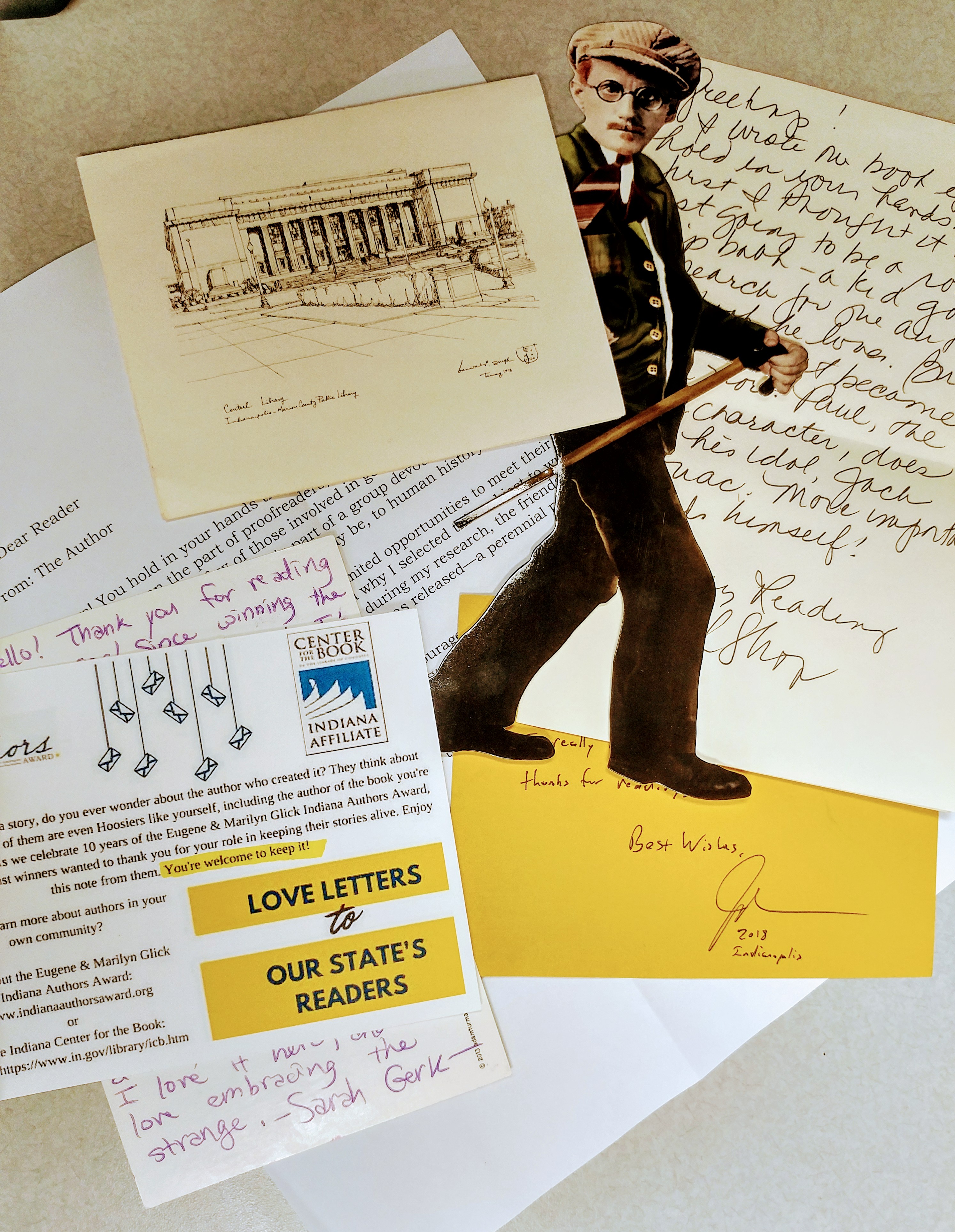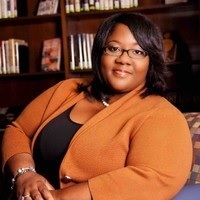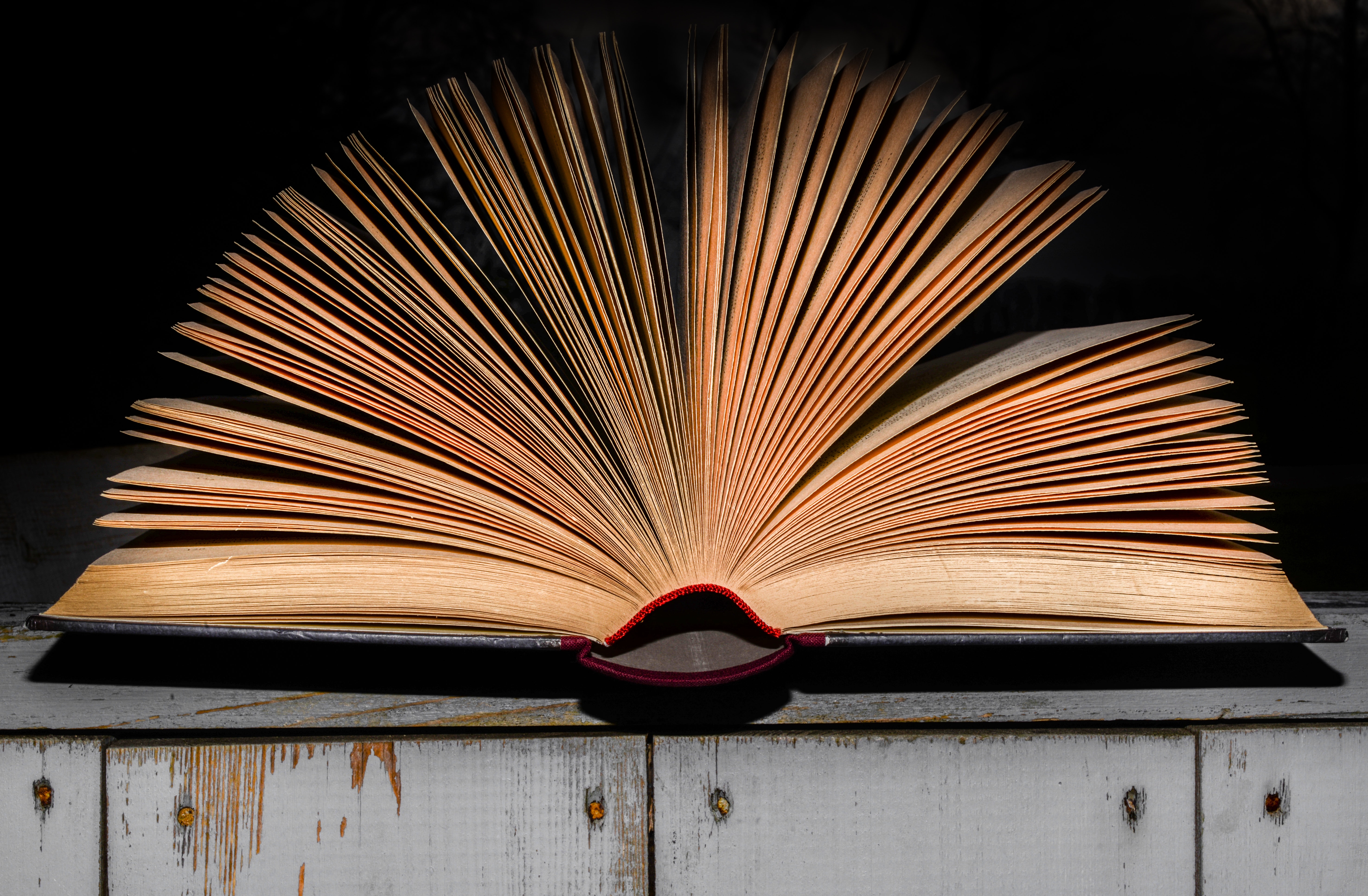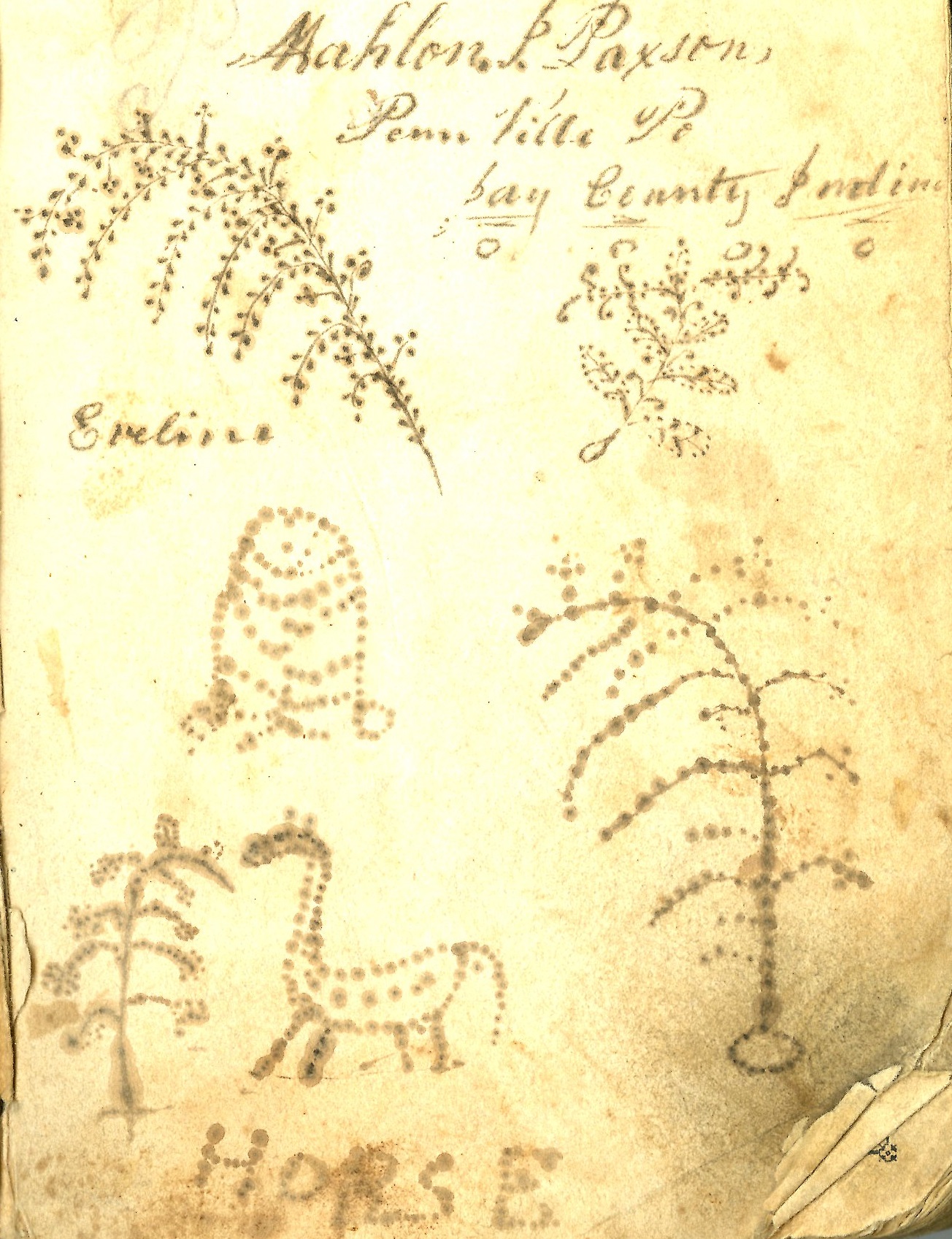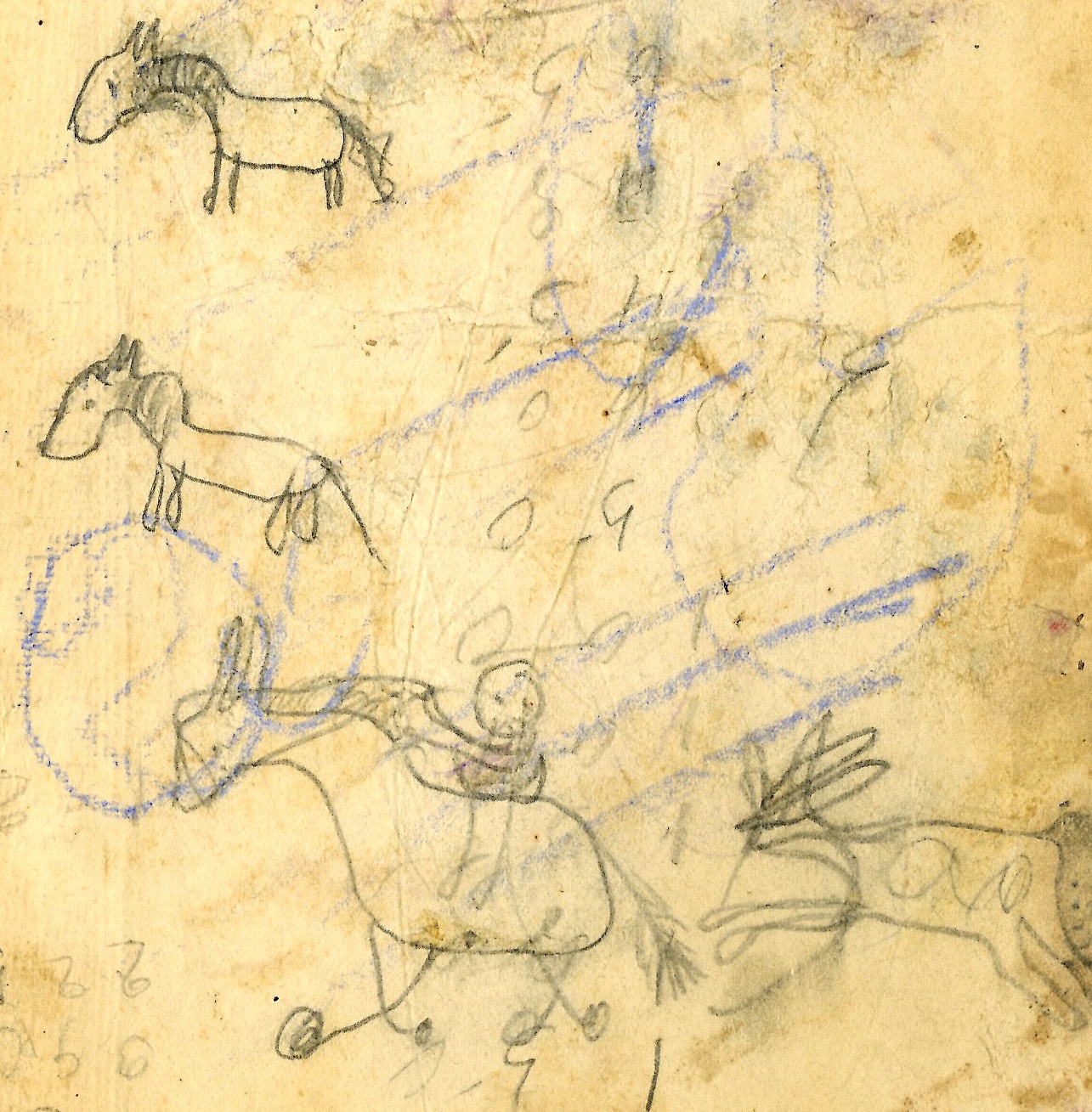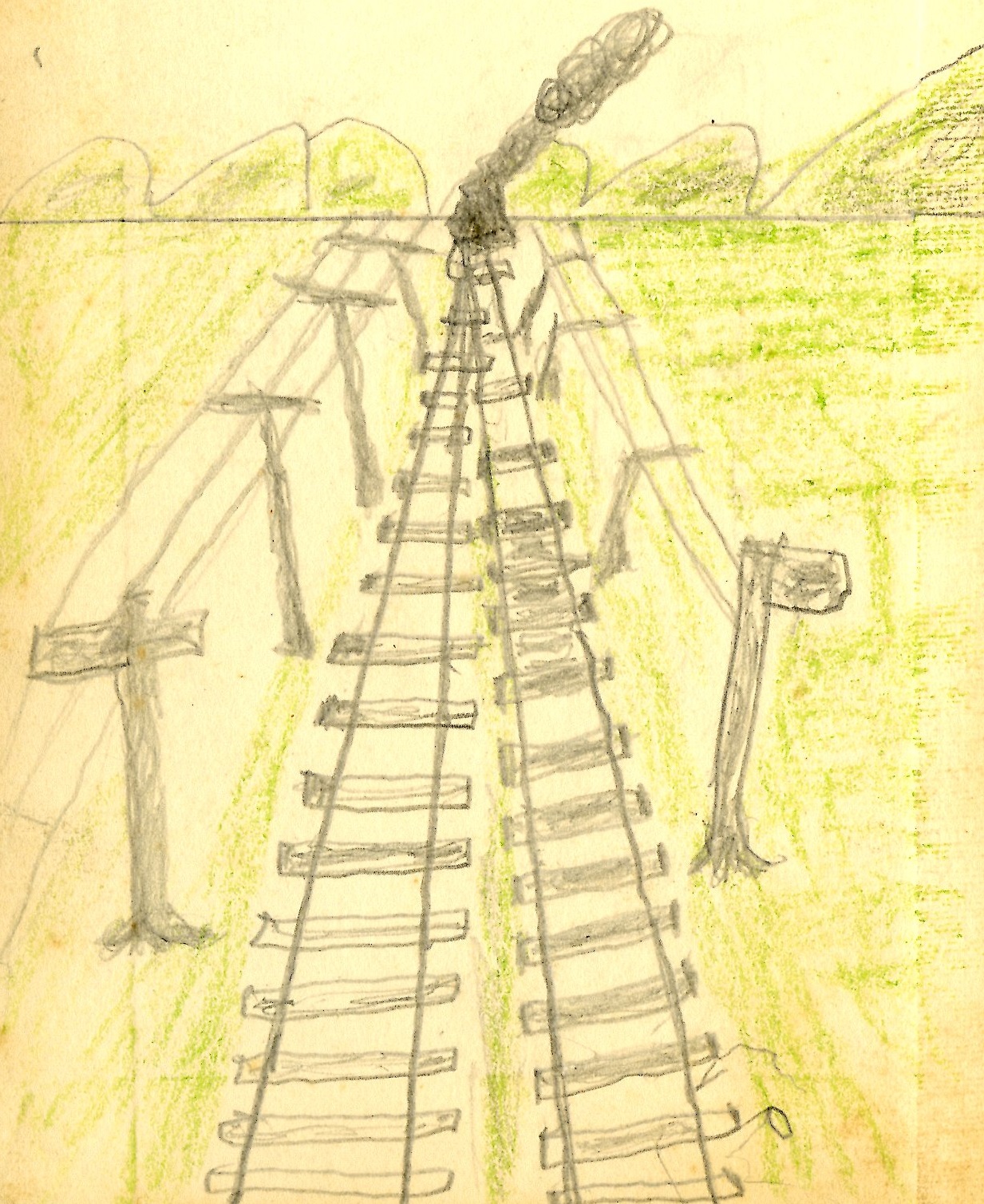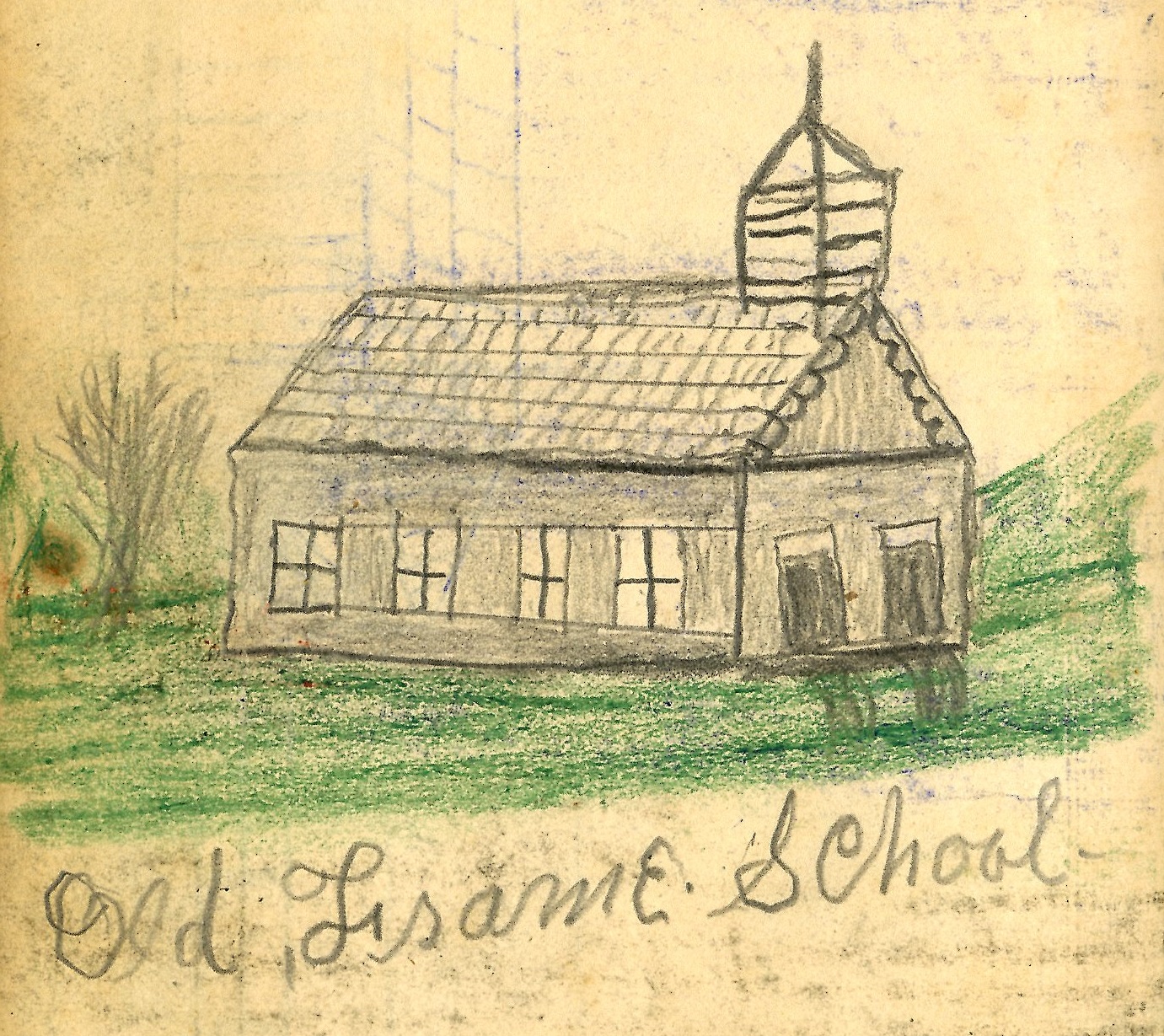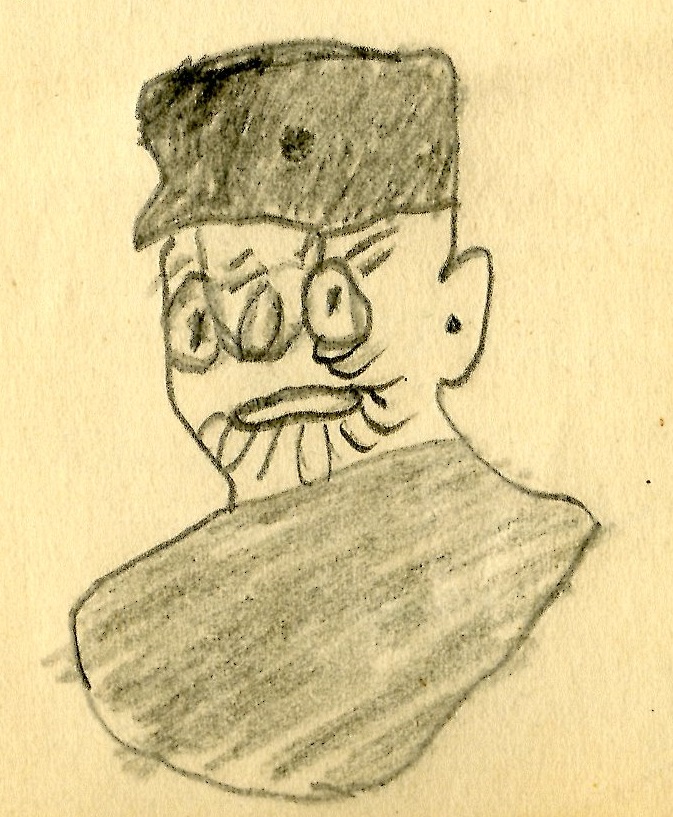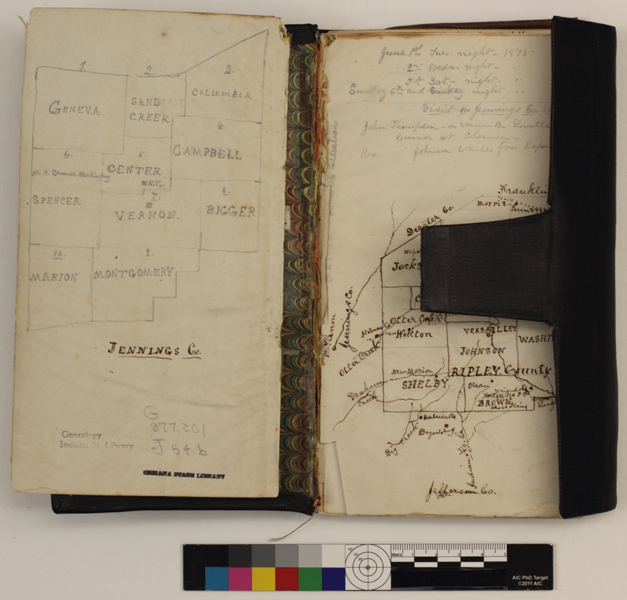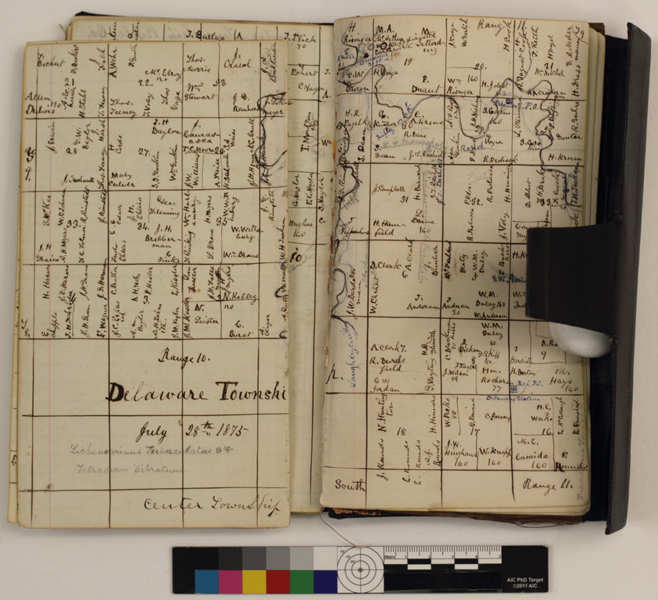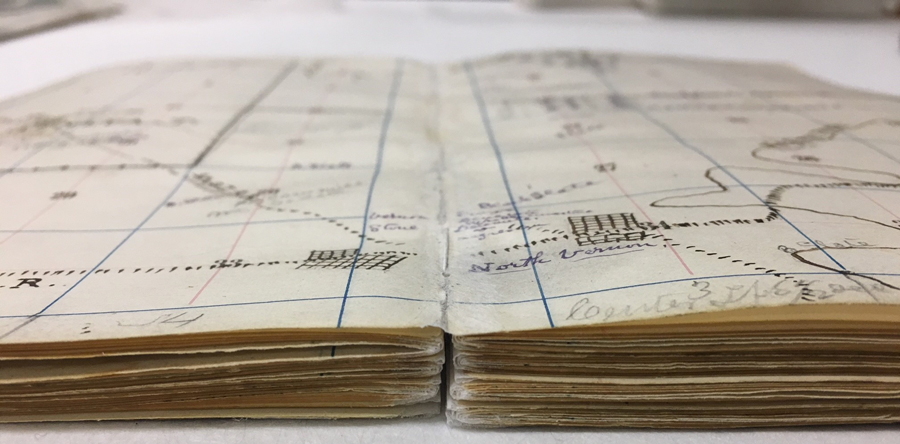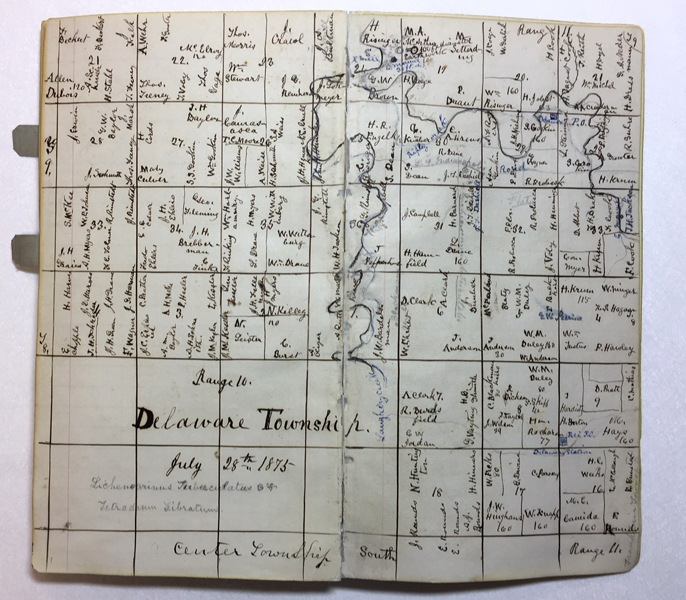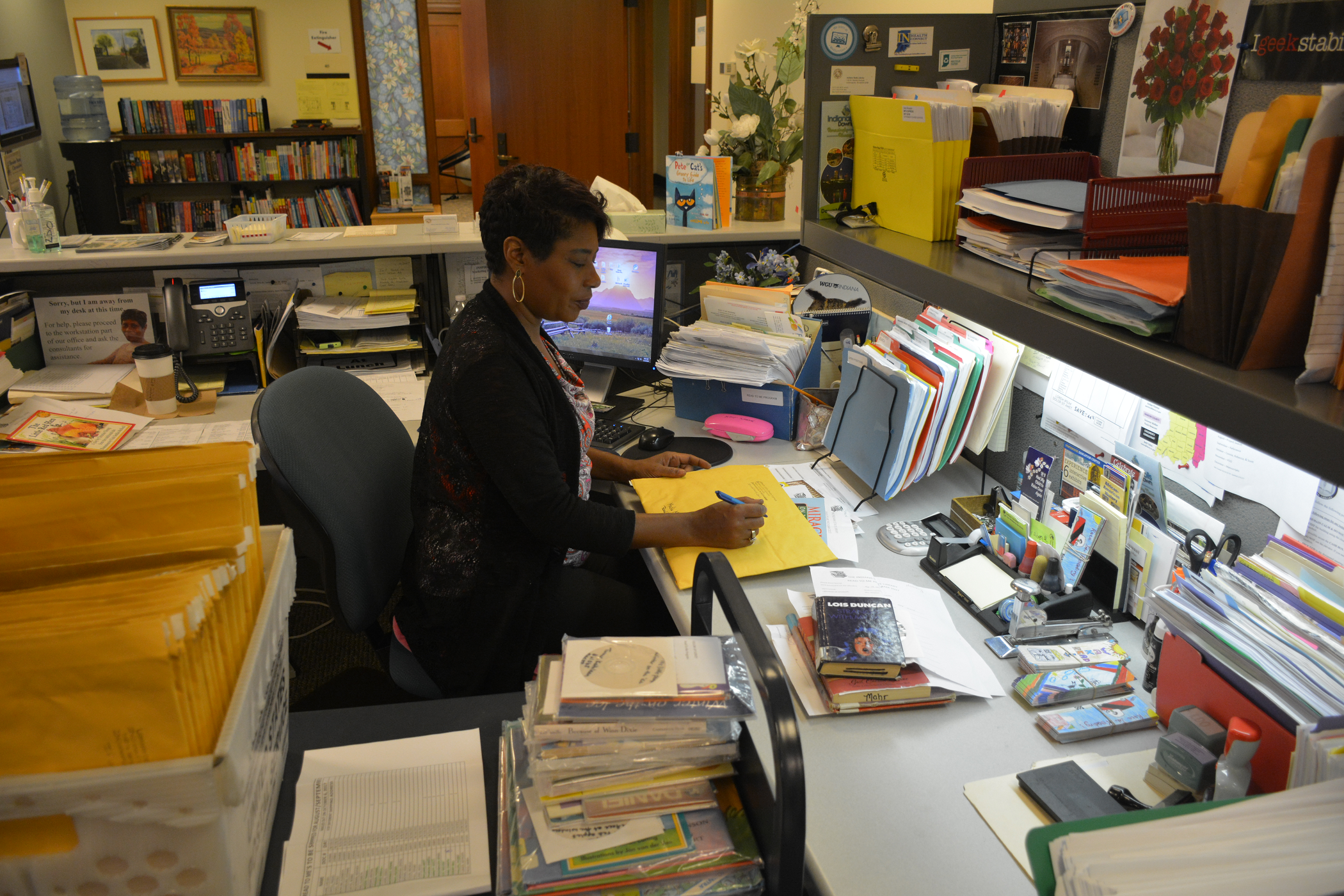Suzanne Walker and Caitlyn Stypa, staff of the Indiana Young Readers Center located in the Indiana State Library, attended the National Book Festival in Washington, D. C. on Sept. 1, 2018. This diary describes their time at the festival.
From the diary of Suzanne Walker, director of the Indiana Center for the Book and Indiana Young Readers Center librarian:
8/31/2018
Dear Diary:
Caitlyn and I had a very early start the day before the festival. I am not kidding when I say that I woke up at 4 a.m. Our flight was at 6:50 a.m. Yikes. I headed to Caitlyn’s house and woke up the neighborhood when her dog decided to wish me a very good morning repeatedly. We finally got on the road. I did miss my turn to go to the airport, which I’ve never done before. I blame the fact that Caitlyn and I were chatting. We chat a lot. All that being said, we arrived at the Indy airport and were on our way with no problem. Our flight was great.
Here we are at the D.C. airport getting ready to jump on the metro. Our first stop is the convention center to set up our booth!
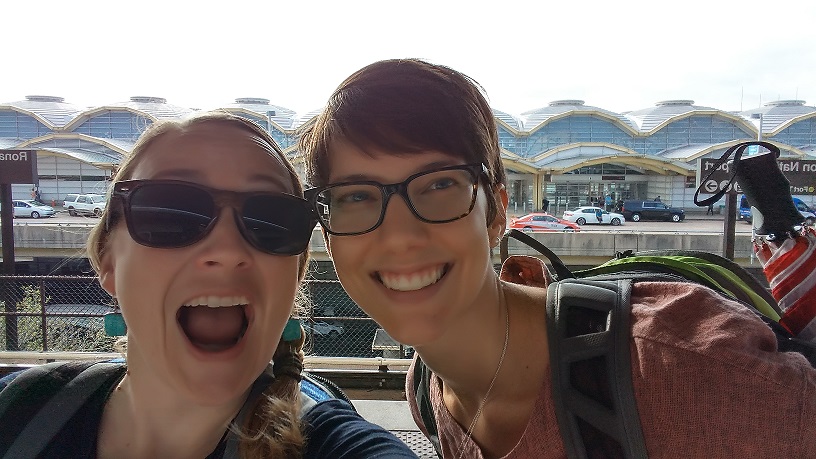
Here is our booth for the National Book Festival. Indiana always tries to make a good showing at the festival. The festival is a free event with book sales, author talks and signings, multiple stages and lots of activities for visitors, including the Parade of the States. Each state shows up with their signature stamp and a book that they are highlighting. Visitors get a map of the USA and collect stamps from each state. The day is usually a blur of children pushing maps in our faces for us to stamp. This is both good and bad. The good part is that we can see a lot of people, but the bad part is it can become a bit repetitive. We are hoping that our unique decorations will make people ask us about our highlighted book, because what do lobsters have to do with Indiana? I’ll answer that later! Indiana always has great bookmarks to give away that are donated to us by Ball State University. This year was no different. We have thousands of bookmarks to give away.
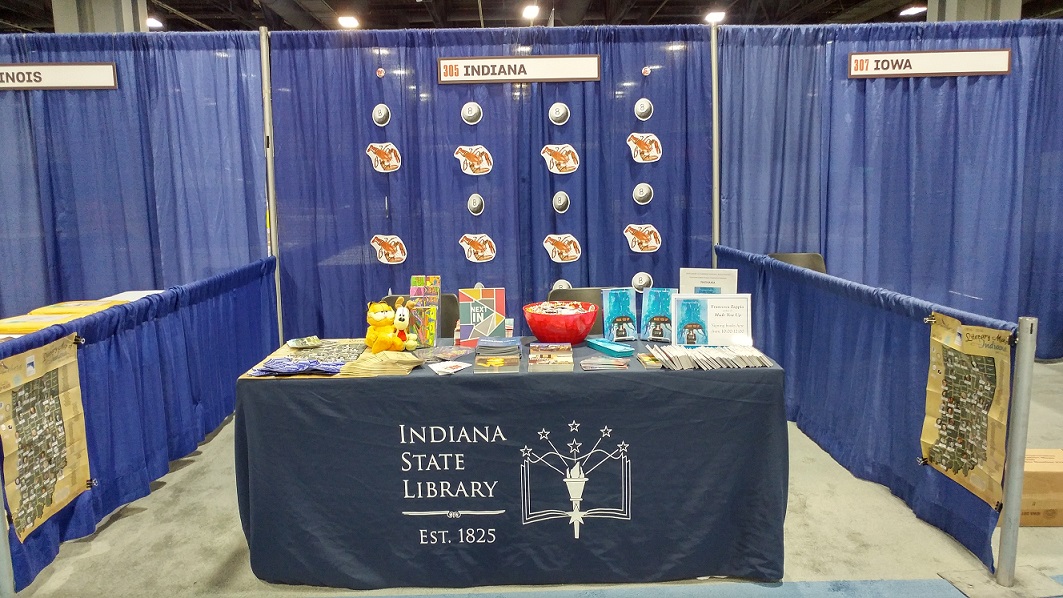
Once our booth was ready, we had enough time to take in a museum before my evening meeting at the Library of Congress. We headed to the National Portrait Gallery and got to see the newest presidential portraits, a gallery of Native American portraits done by George Catlin and some more modern pieces including a map of the U.S. done in neon lights and television screens. I was really interested in the Catlin portraits because of the work we recently did on a new video describing the murals at the ISL. I was glad to see the Indy 500 represented in the modern neon map.
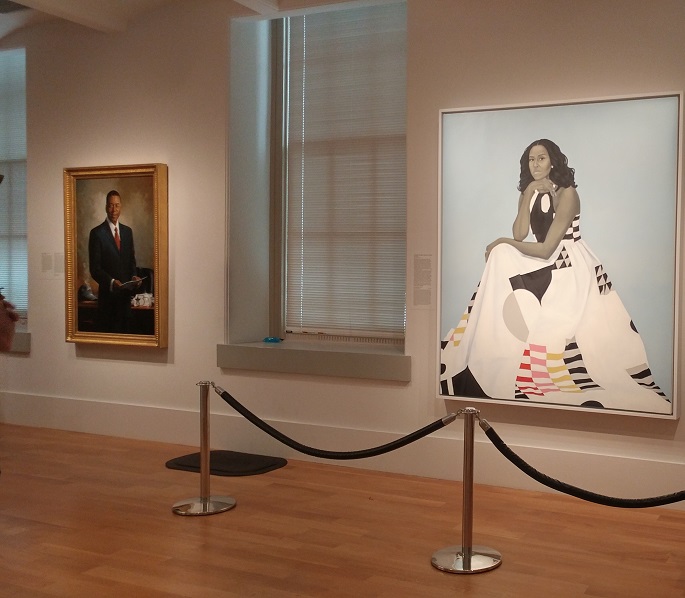
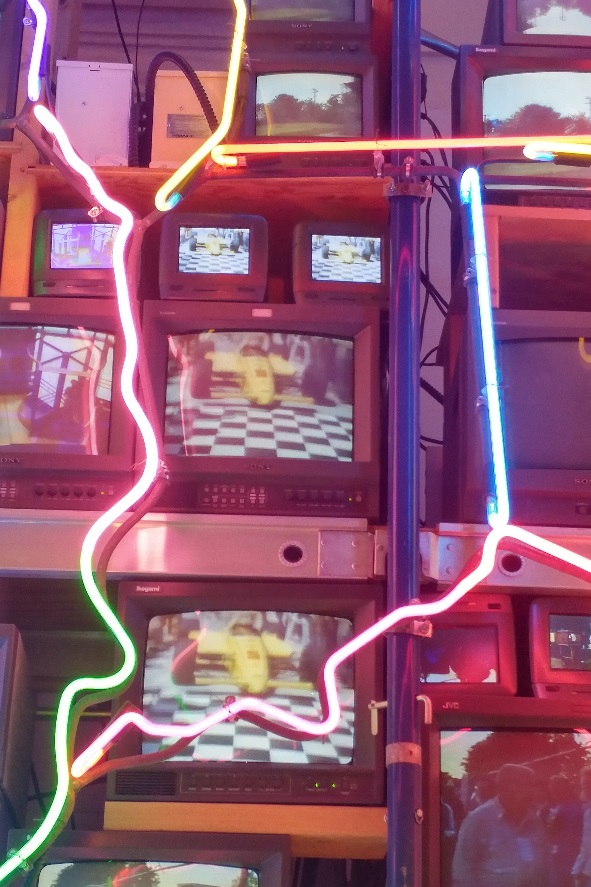
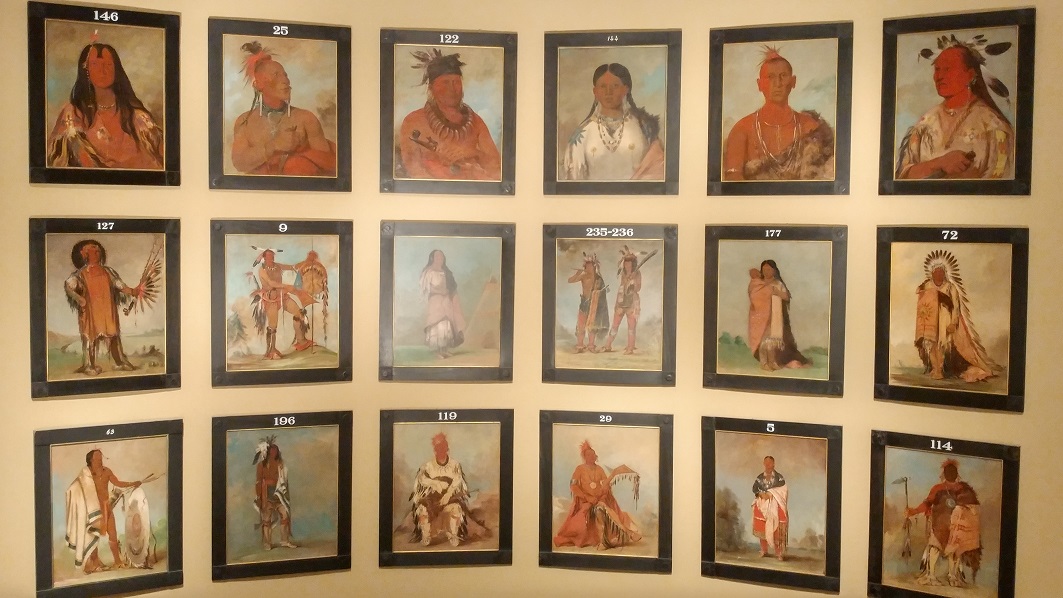
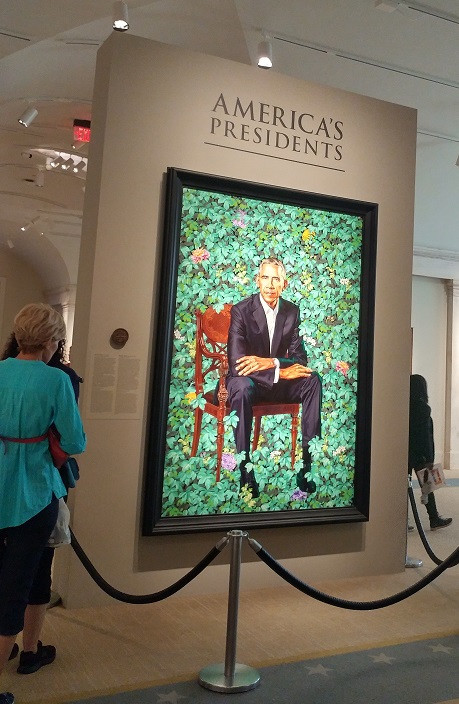
Caitlyn stayed at the National Portrait Gallery while I headed off to the Library of Congress for my meeting, which was primarily about Letters About Literature. It was all good stuff. Caitlyn and I met up after the meeting in an amazing location for two ISL employees to meet in D.C.

Clearly I was excited to find the Indiana Plaza. You can’t tell too much from this picture but it was HOT in D.C.
Our long day was topped off by dinner at Founding Farmers. We had a great time meeting up with old and new friends before we hit the hay to rest up before the National Book Festival tomorrow. Yawn. More tomorrow.
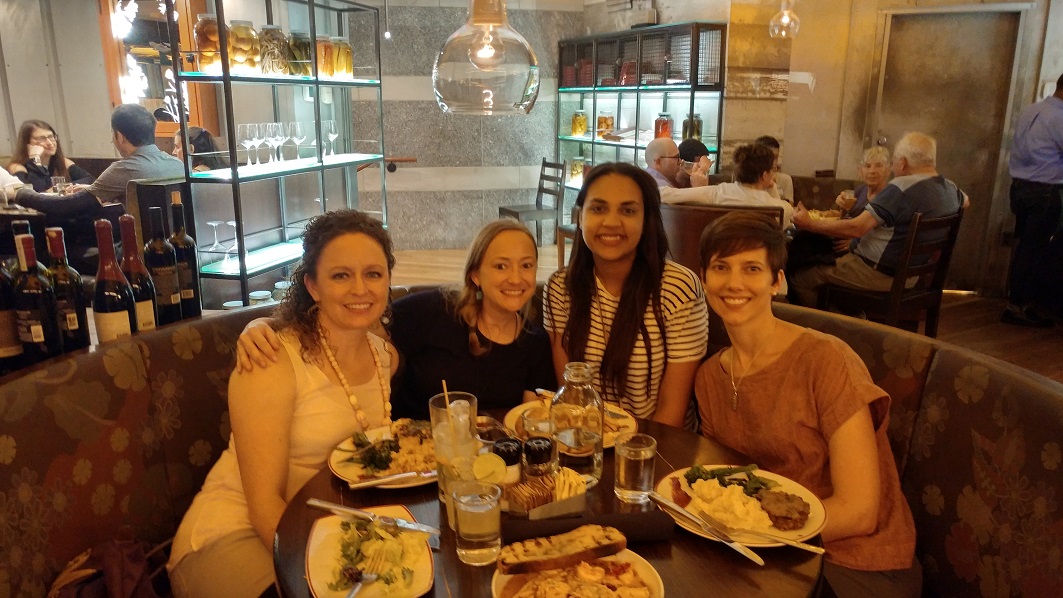
9/1/2018
Dear Diary:
Wow! What a great day we had at the National Book Festival! We started out with breakfast at the hotel and then did the quick walk over to the convention center. We were there by 8:30 a.m., with doors opening at 9 a.m. We said hello to lots of other states and had to run over to the Maine table to explain about the lobsters. Didn’t want any drama with a fellow state!
So here’s the story of why the Indiana booth was covered with Magic 8-Balls and lobsters: The book we chose to highlight in our booth this year was “Made You Up” by Francesca Zappia. Chessie, as we call her because we are now best friends, was only 19 when she wrote the book. She grew up in Indianapolis and is a dream to work with. The book is about a girl who has schizophrenia. She uses a Magic 8-Ball to help her decide what’s real and what’s not and lobsters also have a big role in the book.

And guess who showed up at our booth!? Chessie herself! Francesca was at our booth from 10 a.m to 12 p.m. signing books, bookmarks and helping us stamp maps. It was great to hang out with her and she loved the lobsters and Magic 8-Balls that decorated our booth. Did I mention that our decorations were drawn by an ISL staff member? True story! And they turned out great.
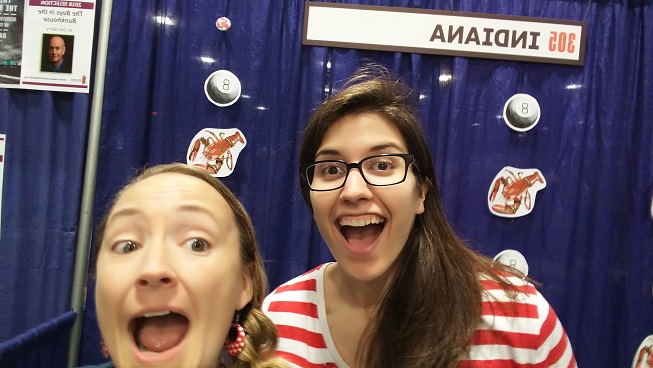
Here’s me and my good friend, Francesca Zappia.
People did ask about the lobsters. And we gave away all the “good stuff” by about 2 p.m. There are about 100,000 people who visit the National Book Festival each year, including Carl Harvey! Lots of Hoosiers also showed up at our table just to say hi and tell us where they are from. We talked a lot about the Indiana State Library and classic Indiana titles. We had a Magic 8-Ball that only answers one question: What Indiana classic should you read next? There are 20 possible answers in that thing! I got “Raintree County.” Caitlyn got “Princess Diaries.”

Here’s Caitlyn, stamping yet another map.
By 3 p.m. I was searching for an aspirin to help with the headache that was doomed to appear. Minnesota helped me out. We stamped more maps and at 5 p.m. we packed up our booth and heaved a sigh of relief. Another successful National Book Festival in the books (excuse the pun)!
After the festival we had dinner with representatives from Alaska, Wisconsin and Michigan. We swapped NBF stories and invited each other to see our representative state libraries. After dinner, Caitlyn and I might have gotten some gelato and then we definitely crashed. Good night!
9/2/2018
Dear Diary:
Caitlyn and I head back to Indy at 5 p.m. today. We have just enough time to see the National Mall and one museum before we head to the airport to get checked in for our flight. We had a great time representing Indiana at the National Book Festival!

Submitted by Suzanne Walker, Indiana Young Readers Center librarian at the Indiana State Library and director of the Indiana Center for the Book.

